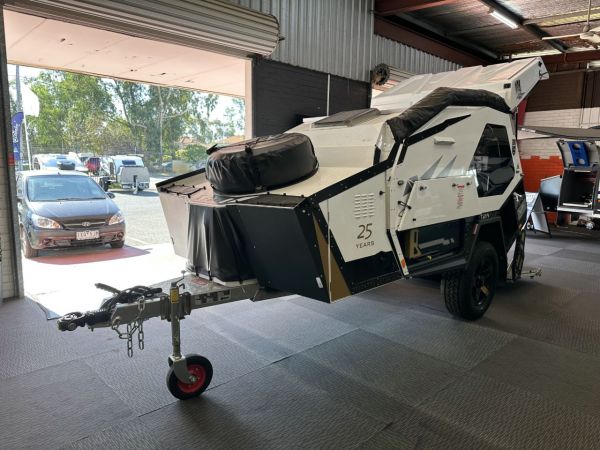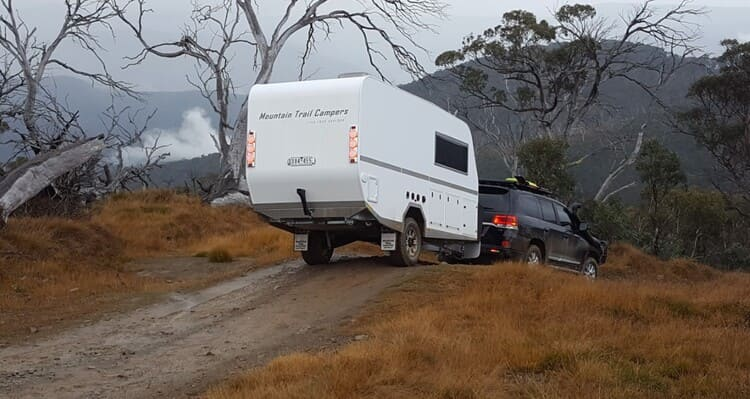
All About Camper Trailers
Humans have been inventing ways of making travel comfortable and convenient almost since the invention of the wheel! History shows many horse and bullock-drawn trailers dating back thousands of years, evolving to stagecoaches, covered wagons, and such. Whether for pleasure or necessity, camper trailers have evolved dramatically, especially since the early 1900s with the invention of the motor car and nowadays with four-wheel drive vehicles.
Wanderlust has always been in my blood. I’m a proud baby boomer and have always held my spirit of adventure. Many Aussies couldn’t afford luxuries such as the booming new offerings of the post-WW2 caravan industry. They chose to make their own camper trailers, mostly out of marine plywood on simple trailer frames. Some still make their own versions of campers; in fact, one of my mates still throws a light framework into his old 6 x 4 with a detachable canvas overlay. Sometimes, the simplicity lends itself to even greater camping pleasure.
I've put together this detailed guide to camper trailers share with you the many types and features available in the modern market and explore how much camper trailers have evolved in recent years.
Early Camper Trailers in Australia
The Australian camper trailer industry really got a kick start in the 1960s when companies such as Cub Campers and Jayco produced their first offerings. While Jayco really navigated the caravan and pop-up camper market, Cub and others expanded into small but very tough little campers with folding canvas tents for more rugged, off-road adventure. Their rear-fold campers are quite legendary, and you still see many original units out camping today.
The big thing that I love about many camper trailers is the innovation! They say that “necessity is the mother of invention,” and we Aussies sure like inventing stuff! Camper trailers have now evolved from simplistic offerings right through to complete mobile home away from homes, no matter your dream destination. It’s not only Australia either; traditionally, the South Africans have been extremely active, and there have been many wonderful imports from them. Their conditions can be very reflective of ours.
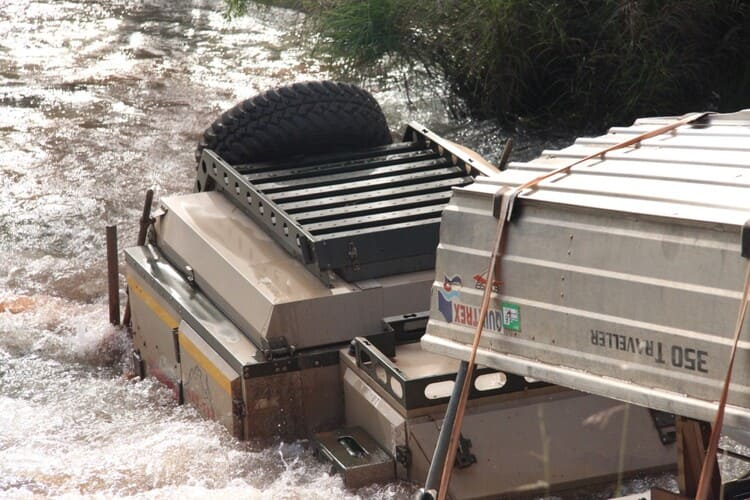
Terrific developments in design and construction methods have been made, with various mediums being utilised, including composite panels, plastic and synthetics, fibreglass, and steel. The two camping essentials of power and water have been expanded with pumping and filtration, power generation, complete battery management, efficient refrigeration, heating and cooling, communication and safety equipment, off-road trailer developments, plus ergonomics and comfort features.
For many years, Australian camper trailer manufacturers said, “How do you separate a caravan from a camper trailer?” The answer was, “A camper trailer has an external kitchen.” Well, that definition went out the door many years ago with the range of innovative designs, including hybrids.
Thankfully, this evolution in construction and design has led to an immense array of new and second-hand availability. However, many old reviews and videos have been lost to cyberspace, often making it hard for used camper buyers to research their purchases thoroughly. So, whether you are considering your first camper trailer or perhaps your last, let’s see if we can help you find your perfect camper trailer!
Soft-Floor Campers
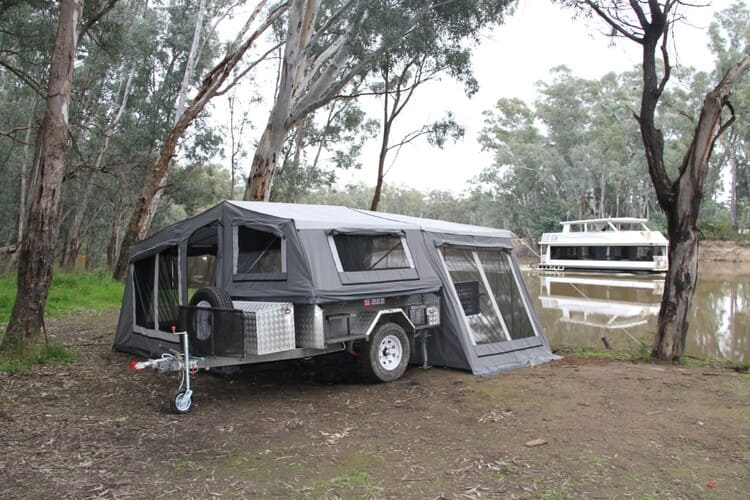
Soft-floor campers once had an immense following—and still do! They come in many variations, shapes, styles, and quality. Many original Australian offerings were exceptionally well built with excellent-quality canvas tents, albeit some were quite heavy. There are numerous configurations with side and rear folding tents, mostly with large annexes and room in the trailer for a pull-out kitchen, sometimes a fridge, battery, and charger, plus storage room for camp boxes, furniture, and accessories. Most have a gas bottle and jerry can mount on the front, as well as a water tank either in the trailer or underneath.
The trailer components can vary from standard leaf-spring suspension with road radials right through to high-quality assemblies with independent suspension, off-road couplings, all-terrain wheels and tyres, and premium brakes.
Some of the early model imported campers were very cheaply constructed, but as they included a host of extras, including huge tent assemblies they attracted many families. Take care with many of the accessories and components, such as soft hinges, weak shock absorbers, light “rip-stop” canvas, low-quality midge mesh and zips, and even non-compliant tow couplings. Time, and competition has mostly eliminated many of those problems.
You usually get what you pay for, with some beautifully constructed local brands still demanding high resale prices. Well-constructed but quite basic units will often have tare weights around 1200 kg with 2000 kg ATM (aggregate trailer mass), but this may vary dramatically.
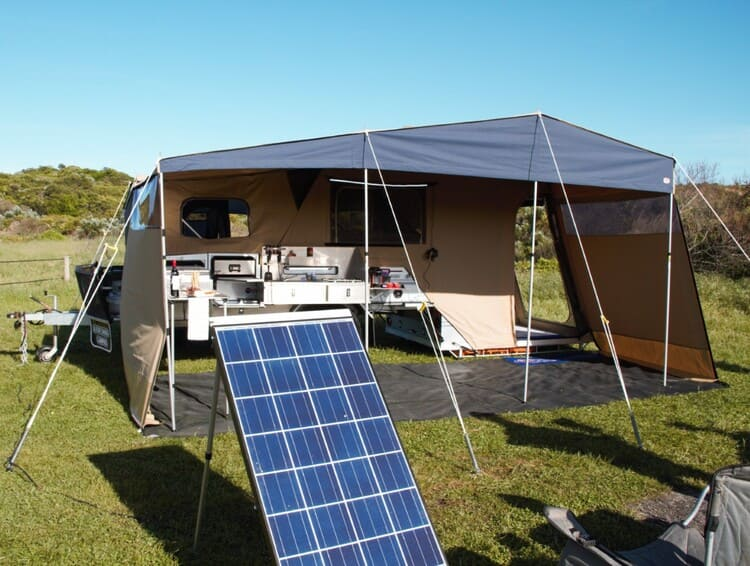
Rear-Fold Campers
Rear-fold campers were exceptionally popular for many years and still are amongst many true camper trailer devotees. Most are built to track in the towing vehicle's wheelbase, and their relatively lightweight construction, and low-height design, mostly combined with rugged, independent suspension providing high ground clearance and recovery angles, make them favoured vehicles amongst true off-road adventurers.
I prefer many rear-fold campers to the more popular forward-folds. The main reason is that the hinging roof becomes a solid floor while the tent is spread like a fan for easy assembly. I particularly like the solid floors as they sit close to the ground, eliminating clumsy steps while keeping pesky unwanted visitors out of the camper. Space wise, they may not be as efficient as a forward fold, and they are probably best for a traveling couple as there are no convertible dinette/beds for the kids – but I like it that way!
The range of rear-fold campers is immense, with offerings from both premium Australian and imported manufacturers. Some are very simple constructions with very low weights, whilst others, such as the premium Mountain Trail EDX V2, are very manageable at 1400kg tare and 2000kg ATM. There are various options with more than one manufacturer even offering loading racks for quad bikes up on top, or fold over tinnie racks off the sides, some even have automatic fold-overs!
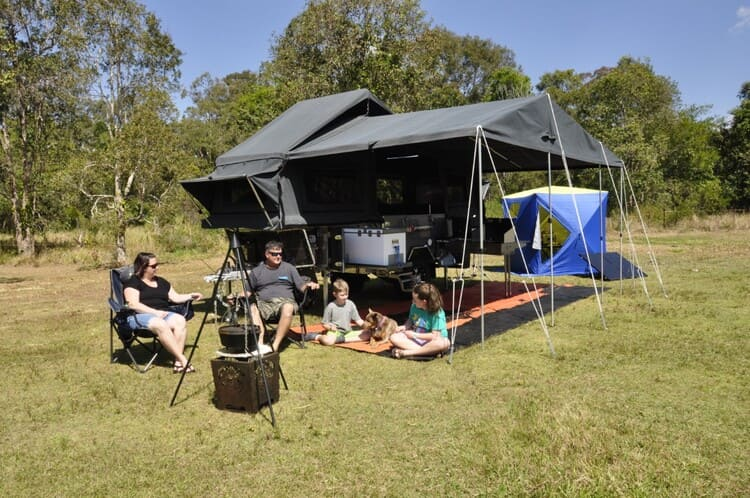
Forward-Fold Campers
The camping world fell in love with forward-fold campers about a dozen years ago. The great attraction was that, generally, the units featured a Queen bed up in front and a convertible dinette in the trailer body. This appeals to many, but I was the odd man out. I generally find the dinette section rather tedious, whilst the majority disagree. However, the dinette converting to yet another Queen or double bed allows two couples or a family to sleep under the main roof.
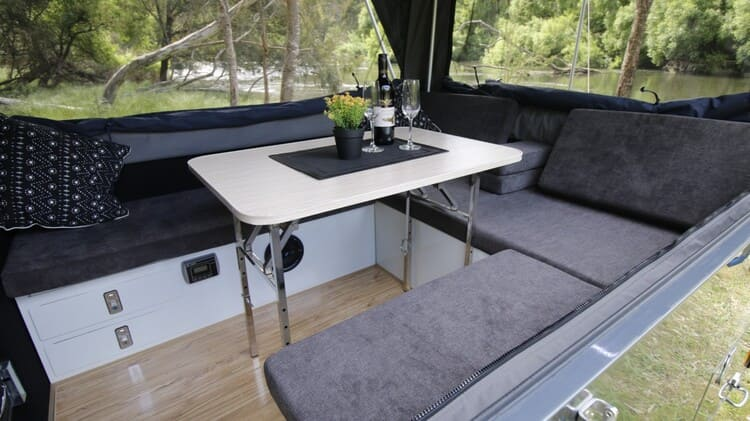
The range of forward folds is immense, and bigger, too, is the range of features and accessories. Most include very well-equipped slide-out kitchens, large water tank capacity, solar and other power sourcing, large battery banks, fridge slide and recess, spare wheel, jerry can and gas bottle storage, variable lighting options, and large annexes, mostly with infills, to complete total camping experiences.
The internal living area of the trailer is raised to the trailer floor height so that the stairs can be an obstacle for many, including me and my bad knees. The tent quality also varies considerably amongst various brands, as does the ease of construction. Believe it or not, two of us once took over five hours to assemble and dismantle a forward-fold camper, and that didn’t include assembling all of the awning side walls. Just imagine that before or after a long day on the road!
Most forward-fold campers feature strong off-road independent suspension and towing couplings, 16” AT wheels and tyres, and 12” electric brakes. But beware, as forward-fold campers can be quite heavy. Most offerings weigh approximately 1500kg tare, including all canvas and poles, with an ATM of 2500kg. However, some in reality reach up to 2000kg tare.
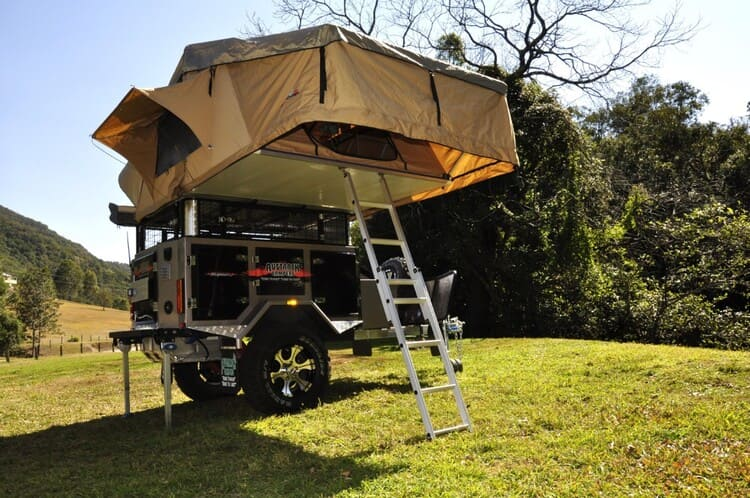
“Chuck Wagons”
The term “chuck wagon” is my own definition of many small, very compact camper trailers that may or may not include a fold-out tent. Some of the Patriot Campers range are a great example. In fact, the first version of the popular Patriot X1 I tested was offered with a rooftop tent with extended awning options or without any accommodation, with some owners preferring plenty of storage on top for a family of swags.
These brilliant little campers can offer versatile camping facilities with a very small footprint, making them ideal for rough road travellers. Again, options can vary from very simple units such as the Pod Kwik Camper (Stockman) with its plastic body and low tare weight of around 400 kg, including the toolbox, tent, and kitchen, and with its ATM of only 750kg, you don’t need added brakes.
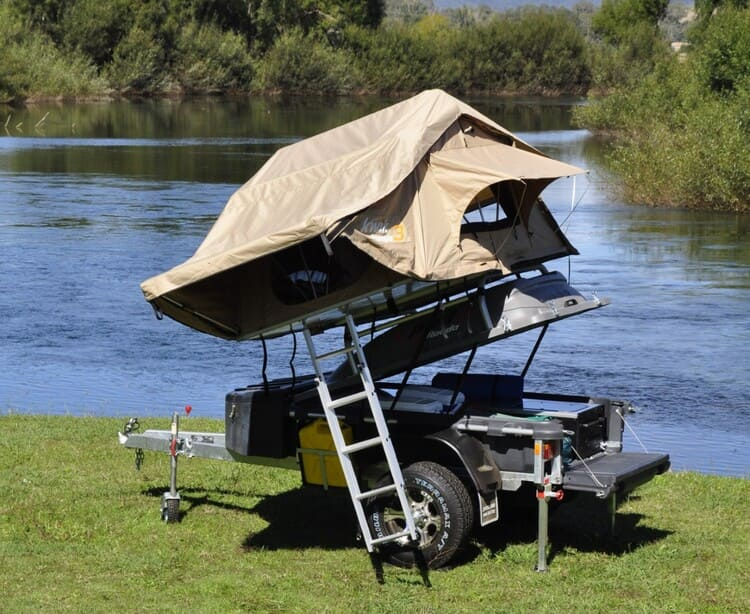
Should you wish to go to premium, state-of-the-art campers, look no further than the gutsy and innovative Patriot range. Their popular X3 still weighs in at only 1160 tare and 1600ATM, with a very comprehensive build with state-of-the-art fittings, features, and accessories. Obviously, the price range varies accordingly, but so do the features.
And then there's Austrack Campers. I must admit that I love the versatile little Austrack Simpson X rooftop camper with its quality, versatility and price, but roof top campers leave me a bit behind due to the access ladders. They are great for younger, more agile campers especially in northern climates where you can sleep comfortably out of range of toothy critters!
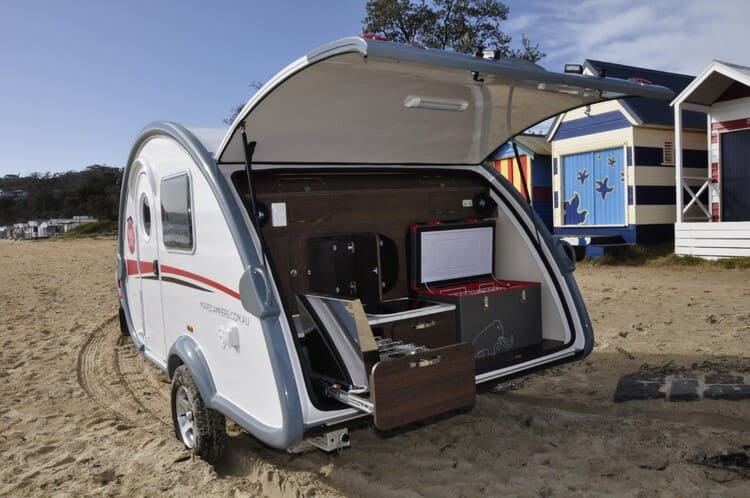
Teardrop Campers
While I have never owned a small “teardrop” camper, I certainly see the attraction. They can be as simple as a small mobile sleeping shell or versatile, premium-quality campers that are fully equipped for rugged off-road expeditions.
Simple teardrop campers usually feature a Queen bed, perhaps a battery and light fittings with limited storage compartments for accessories, cooking and camping equipment. Most have alloy or fibreglass composite bodies and standard leaf suspension.
More extensive options usually include a rear-mounted kitchen with hinged access door enclosing sink with freshwater, pull out stove, cabinets and fridge mounts.
Some premium offerings include the very popular Track Trailers T-Van and BRS Sherpa; however, their size and features better place them in the hybrid classification.
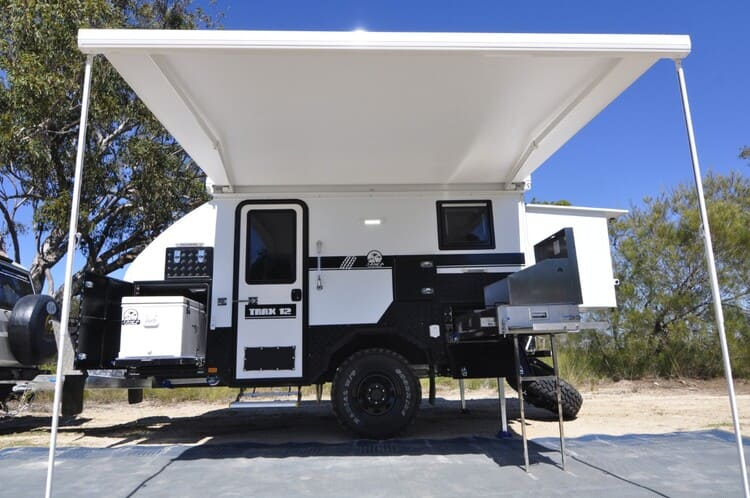
Hybrid Campers
Hybrid campers are exactly as per the dictionary definition, “a thing made by combining two different elements” or “of mixed character; composed of different elements.” In the case of camper trailer hybrids they are generally a crossover between a caravan and an off-road camper. This leaves the classification with a very broad definition creating lots of variances.
Hybrids generally have a composite insulated body extended by pop-up, slide and hinged compartments of all sorts. They are mostly quite advanced in their fit outs with off-road running gear including independent suspension and large AT wheels and tyres, with good wheel clearance but still within the width of the towing vehicle.
Hybrids have a mixed array of options and features usually including large solar and battery management systems with big battery storage capacity, large water and sometimes grey water tanks, fridges, and often both internal and external kitchens. Some hybrids even offer fold out extensions for a King size bed, bunks and even small ensuites. There is generally a host of accessories including one or two spare wheels, rear bumper bar, reversing camera, stereo systems, SMART TV, HWS, mains water connections, air conditioner, external shower, loads of storage options, mood lighting and external awnings. Some even have mechanised pop-up roofs!
The hybrid revolution has undoubtedly expanded the camper trailer world, but there is a catch—many offerings are quite heavy, which is understandable given their construction and features. A typical 15’ hybrid weighs in at around 2500kg tare with 3000kg ATM, and that’s quite a load to consider in weight and towing capacity, especially off-road.

There are many hybrid offerings to consider, from premium Aussie construction to the highly competitive imported versions. Many different brands of imports look very similar and may only be separated by accessories and paint jobs! However, there is some real innovation in hybrid technology emanating from the wonderful offerings of companies like Track Trailer with their tough, and ever-popular T-Vans, including their innovative asymmetrical suspension and unique designs. Other great Aussies include AOR, Complete Campsite, Rhinomax, Vista, BRS, Kimberley, Trakmaster and many more. There is a great range of imports from companies such as Austrack, MDC, Mars, and Jawa, and don’t forget the South Africans like Jurgens and Conqueror, plus many other options to suit your lifestyle and budget.

With the huge diversity of camper trailer brands, there are new or second-hand camper trailers for everybody, in every price range. Plus, there are so many other unique innovations, including individuals like the Opus self-inflating camper with both forward and rear fold, and one of my personal favorites, the Ultimate Camper range.
My brother-in-law once said, “I just wanted a simple trailer with a family tent and racks for our kayaks—I’m happy to teach my son to cook on an open fire and carry a small gas cooker. The fridge lives in the car, and there’s room for other camping essentials in the trailer.” He had just bought a cheap soft-floor camper for $5,000.
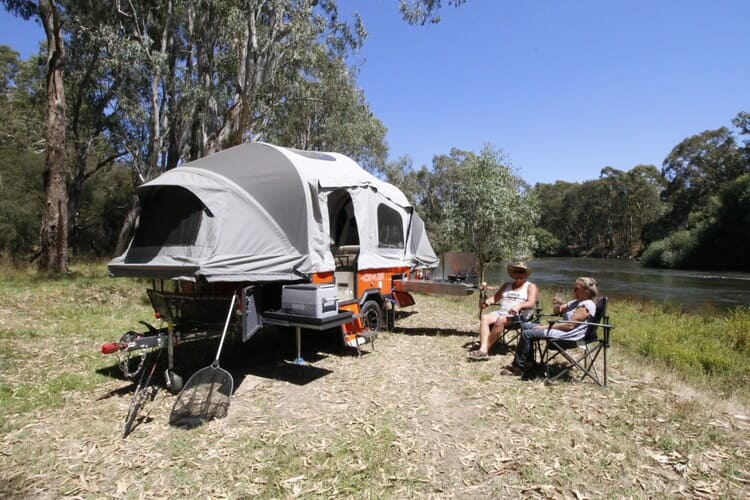
There are also many other camping options including off-road caravans, fifth wheel trailers, camper vans, mobile homes and slide ons to further confuse your informed decision on such a significant investment.
Others have more demanding off-road needs and travel off-grid for months at a time. It’s not unusual for them to spend upwards of $120,000 on their application, though there are also more affordable off road campers these days. Ultimately, it's up to you—just get out there and enjoy our great land in your camper trailer.
Oh, if you are nervous and just want to put your toe in the water, perhaps consider hiring a camper trailer to explore the lifestyle. I am sure you will love it!
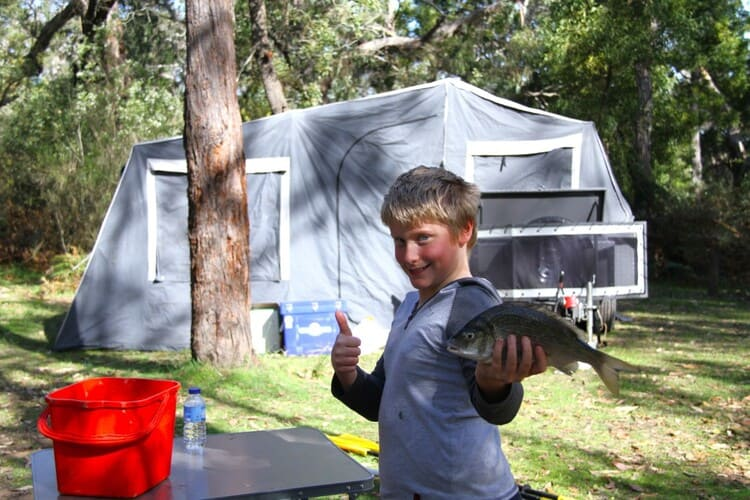
Found your perfect purchase? Let’s make financing just as easy!
Work with Australia’s best-reviewed finance broker for a great deal and a stress-free experience. With 2,500+ glowing Google reviews, you can trust you're in good hands! See what our happy customers say in Credit One reviews, or jump right in and crunch the numbers with our handy loan repayment calculator. Your ideal financing solution is just a few clicks away!

